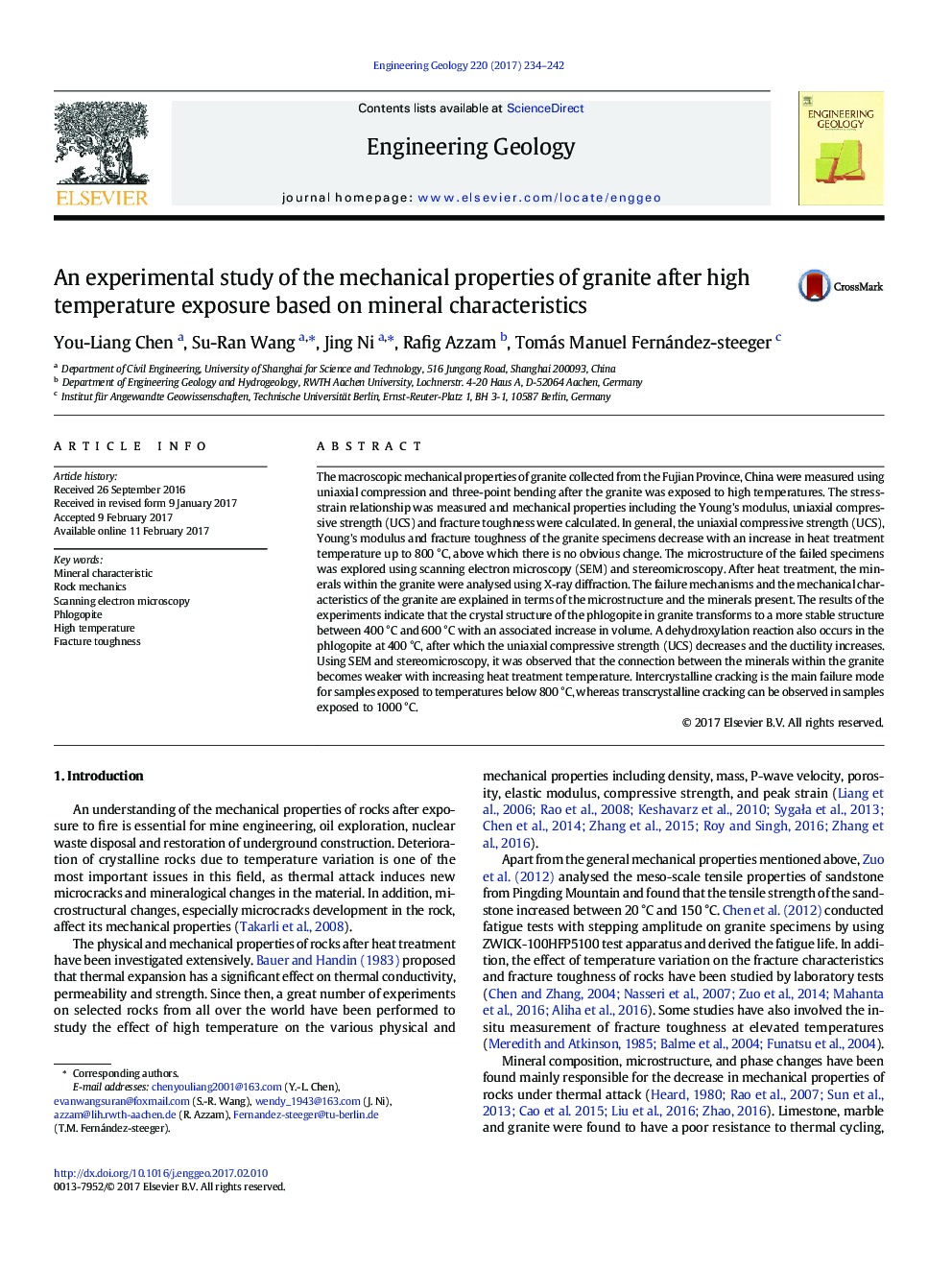| Article ID | Journal | Published Year | Pages | File Type |
|---|---|---|---|---|
| 5787604 | Engineering Geology | 2017 | 9 Pages |
â¢Uniaxial compression and three-point bending were performed on granite specimens after heat treatment.â¢Uniaxial compressive strength, Young's modulus and fracture toughness of the granite were examined.â¢X-ray diffraction, SEM and stereomicroscopy were used for exploring the microstructure and the minerals of the granite.â¢The crystal structure of the phlogopite is found to be the main contributory factor to the granite mechanical properties.â¢Failure for temperature below and over 800°C is due to intercrystalline- and transcrystalline cracking, respectively.
The macroscopic mechanical properties of granite collected from the Fujian Province, China were measured using uniaxial compression and three-point bending after the granite was exposed to high temperatures. The stress-strain relationship was measured and mechanical properties including the Young's modulus, uniaxial compressive strength (UCS) and fracture toughness were calculated. In general, the uniaxial compressive strength (UCS), Young's modulus and fracture toughness of the granite specimens decrease with an increase in heat treatment temperature up to 800 °C, above which there is no obvious change. The microstructure of the failed specimens was explored using scanning electron microscopy (SEM) and stereomicroscopy. After heat treatment, the minerals within the granite were analysed using X-ray diffraction. The failure mechanisms and the mechanical characteristics of the granite are explained in terms of the microstructure and the minerals present. The results of the experiments indicate that the crystal structure of the phlogopite in granite transforms to a more stable structure between 400 °C and 600 °C with an associated increase in volume. A dehydroxylation reaction also occurs in the phlogopite at 400 °C, after which the uniaxial compressive strength (UCS) decreases and the ductility increases. Using SEM and stereomicroscopy, it was observed that the connection between the minerals within the granite becomes weaker with increasing heat treatment temperature. Intercrystalline cracking is the main failure mode for samples exposed to temperatures below 800 °C, whereas transcrystalline cracking can be observed in samples exposed to 1000 °C.
